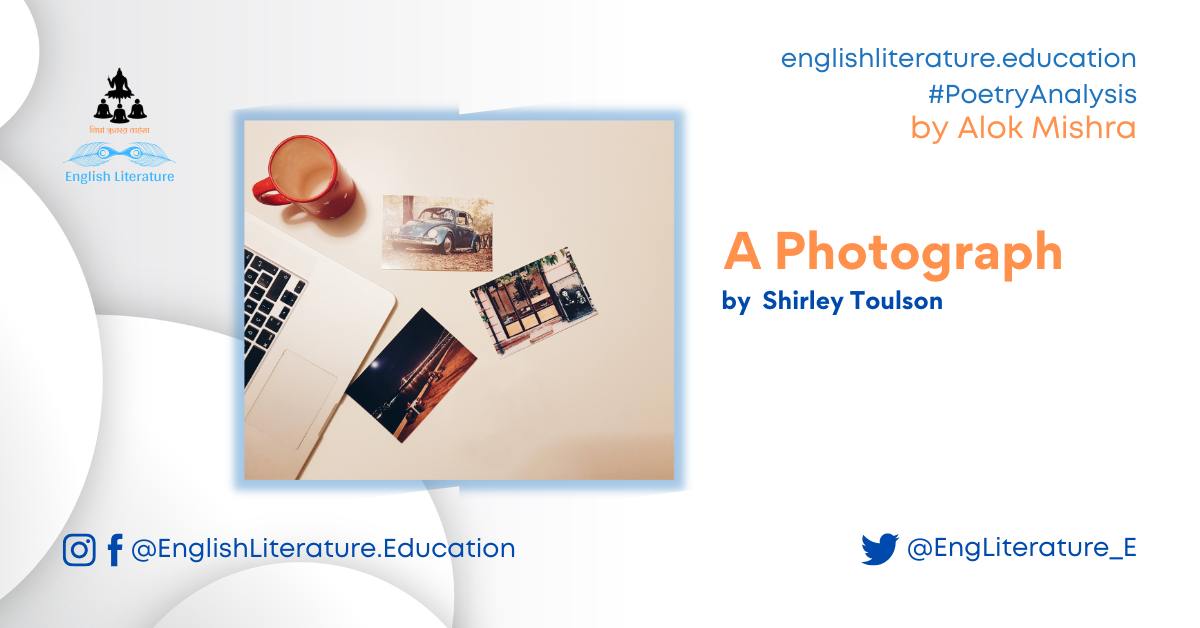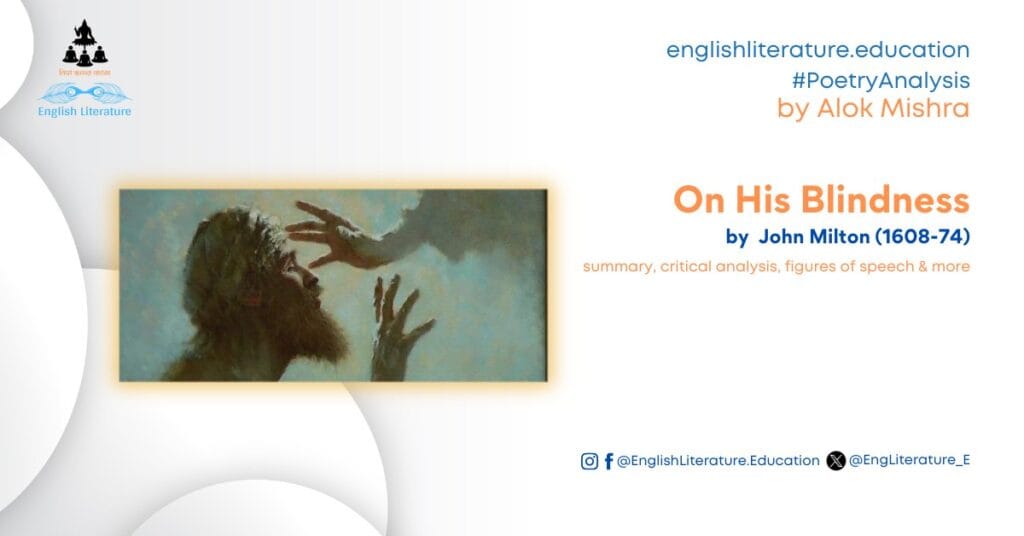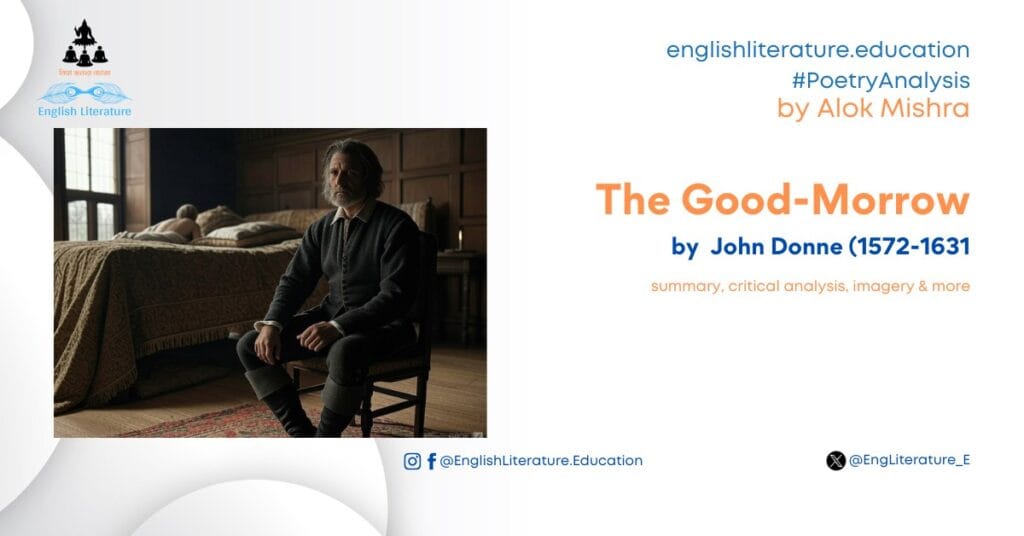A brief introduction to the poem:
A Photograph is a poem by British poet Shirley Toulson. Prescribed in classes 11 & 12 (India), the poem has become popular because students have to study it. The poem essentially is about the inevitable passage of time and the course of nature that does not change ever. The poet remembers her mother by looking at the photograph that has grown old itself. Youth, strength, and power – everything passes as time flies. Time is permanent and everything else is temporary. The poet notices her mother at a young age who went on a ‘sea holiday’ with two other girls and got a photograph clicked in which the three young girls were smiling and because of the wind, their hair flew. After many years, the uncle who clicked the image died, the poet’s mother died, and many things changed. The sea, however, changed very less, if at all it changed. In short, nothing in the universe is permanent except the universe itself. Keep reading for a critical analysis, full summary, and line-by-line explanation of the poem. At the end of this article, you will also find an essential introduction to the poet Shirley Toulson. Please go through the article thoroughly.
Summary of the poem A Photograph by Shirley Toulson:
Written in 19 lines, the book version (CBSE English) has three stanzas of 9-6-4 lines and some versions have 19 lines straight. The poem does not follow any rhyme scheme or lyrical pattern. And therefore, the style of the poem is Free Verse. Coming to the content of the poem, A Photograph opens with the poet looking at a picture in a frame. The picture reminds the poet of her mother and two other women (mother’s cousins) in their youth when they went out on a holiday to visit the sea. At the time this photograph was taken by a man (the poet refers to him as uncle with the camera), the poet’s mother was about twelve. She stood in between and two of her cousins stood on both sides of her. Poet’s mother was beautiful in that image. The hair of the three girls in the photo covered their faces because of the wind. They were smiling and it created a wonderful picture for them to remember. The poet’s mother, after 20-30 years of the photograph, often smiled looking at it and told her daughter (the poet) how Betty and Dolly (the poet’s mother’s cousins) dressed for that day, the sea holiday. The poet tells her readers that the past for the poet is her mother’s laughter after looking at the photos and for her mother, it was the sea holiday. And commenting on the present time, the poet has nothing to say. Silence silences.
Critically, A Photograph is about time’s timelessness. Time is truth and everything else changes as time progresses. If you notice line number 8 and 9, you will note that the sea was there before the poet was born and her mother was young. The sea is there now that the poet’s mother is dead and the poet is herself old (or will be so soon). Whereas, the poet’s mother’s and those other two women’s feet were transient. Here, one can say that the poet has tried to compare the transient feet imagery with human nature to decay and last soon compared to nature and its course which is eternal! Time triumphs! In short, A Photograph is about the recollection of memories of one’s loved ones who are no more. At the same time, it also celebrates the truth that we are meant to last and we should enjoy the moments that we have.
Line-by-line explanation & critical analysis of the poem A Photograph:
Now, let’s get into the explanation of the poem. We have reproduced the poem from the CBSE book of English, Hornbill. We will move ahead by explaining all three stanzas of the poem one by one. It is a 19-line poem divided into three unequal stanzas of 9, 6, and 4 lines. Let’s have a look at the first stanza and we will explain it:
(Lines 1-9)
The cardboard shows me how it was
When the two girl cousins went paddling,
Each one holding one of my mother’s hands,
And she the big girl – some twelve years or so.
All three stood still to smile through their hair
At the uncle with the camera. A sweet face,
My mother’s, that was before I was born.
And the sea, which appears to have changed less,
Washed their terribly transient feet.
Simple Meaning: The poet observes a photograph framed in a cardboard frame. This photograph is from the day when the poet’s mother and her two cousins (sisters) went on a holiday to visit and play on the seaside (beach). Two girls held the two hands of the poet’s mother who was the eldest (and perhaps the tallest) among the three. The poet also tries to guess the age of her mother and supposes it to be about twelve (or so suggesting 13 or 11). At the time of the photography by some person (maybe a relative or a professional photographer) holding the camera, three girls stood still and smiled. The wild blew their hair and it may have covered the faces of the three girls as the photo got clicked. The poet admires the looks of her mother and recollects how beautiful she looked before the birth of the poet. And now, things have changed a lot. The poet’s mother has died. The poet herself has aged well. But the sea, the poet suggests, has changed very little or not at all. And the photo also shows the ocean water washing the feet of the three girls as they stood on the beach.
Critical Analysis & Poetic Devices: The poem does not follow any rhyme scheme or lyrical pattern and it is written in free verse style. And there are no significant poetic devices in use in the stanza above. However, there are a few instances of metaphors and alliteration in the stanza discussed above. Focus on the last two lines, line numbers 8 and 9. The poet suggests that the sea has changed very less. As a matter of fact, the surroundings may have changed because it is mostly man-made. The sea should remain the same. The sea washing the terribly transient feet of the three girls in the picture may suggest the juxtaposition of humans and nature. We human beings are mortal and destined to change, decay and die, eventually. On the other hand, the mighty ocean represents the unchanging force of nature, the cosmos and the universe that does not change whatever happens. So, you can say that the ‘terribly transient feet’ of the girls is a metaphor that represents mortality and the sea is a metaphor that represents the force of nature. Class 11 and 12 students who are interested in literature may have read the poem The Rainbow by William Wordsworth. In this poem also, the poet compares human mortality with the unchanging and ever-lasting force of nature with the help of the metaphor Rainbow. Coming to Alliteration, it is the use of similar consonant sounds to create a sonorous impact in verse. In line number 5 and 9, focus on the words stood, still, smile, terribly and transient. And now we move to the next stanza of the 6 lines of the poem A Photograph by Shirley Toulson.
(Lines 10-15)
Some twenty – thirty – years later
She’d laugh at the snapshot. “See Betty
And Dolly,” she’d say, “and look how they
Dressed us for the beach.” The sea holiday
was her past, mine is her laughter. Both wry
With the laboured ease of loss.
Simple Meaning: The poet recalls how her mother, after two-three decades from the day the photograph was taken, laughed at the photo and told the poet about her aunts Betty and Dolly (the poet’s mother’s cousins) and the way they dressed for the occasion – the sea holiday. The holiday at the beach was the past of the poet’s mother and the way she laughed remembering the day was the past of the poet. The phrase laboured ease of loss suggests the suffering and pain of losing someone you love. The memories of the past that used to please may change in pain with time.
Critical Analysis and Poetic Devices: Alliteration is used in this stanza as well. Words wry, with, she, and see scattered through the lines – there are also instances of in-line rhymes if you pay close attention to this stanza. In the second line of the above stanza, ‘see Betty’ produces a lyrical effect which continues in the next line ‘she’d say, ‘and look how they’. And it rhymes with the next line ending with the word holiday. In lines 10-15, the poet discusses how time flies and it is powerful enough to change incidents we live into lively or faded memories. The poet’s mother lived that day of the photograph and then she continued to remember those memories. For the poet herself, her mother remembering those memories becomes a memory and she feels the pain as those memories are rekindled as she looks at the photo frame. Suffering and loss as inevitable laws of nature are presented in the lines above. And now we move to the next 4 lines that conclude the poem A Photograph by Shirley Toulson.
(Lines 16-19)
Now she’s has been dead nearly as many years
As that girl lived. And of this circumstance
There is nothing to say at all,
Its silence silences.
Simple Meaning: In the first line, the poet informs her readers that her mother has been dead for about 12-13 years (mark the comparison – dead nearly as many years as that girl lived [the big girl in the photo]). And the poet concludes by saying nothing about this circumstance that becomes silent with time. These four lines end the poem with a tone of sadness and suffering. The photograph that reminded the poet’s mother of a happy day outing at the beach with her cousins reminds the poet of her mother’s death. Time changes things quickly or eventually. But it does change things. Time is inevitable and whatever it brings with itself is also inevitable.
Critical Analysis and Poetic Devices: Lines 16-19 are examples of prosaic lines in poetry. In general, these lines are used to convey universal truths or something that is wise, intellectual or cold. As discussed in the section above, ironically and sadly the photograph that was a source of delight for the poet’s mother has changed into a reminder of the loss for the poet. However, the poet seems to have compromised with the loss and moved ahead in life. She does get a happy memory of seeing the smiling face of her mother in the photo. The last two lines remind readers of the inevitable truth – nature has its own course and it keeps following the same, come whatever! The silence of the loss of the poet’s mother has silenced itself in the abyss of the cosmos. And nothing can be said or done about it.
Critical commentary on the poem A Photograph as a whole:
A Photograph by Shirley Townson is a poem that signifies the constant force of nature which is always on work. Aided by time, nature has its inevitable course to follow and we human beings cannot do anything about it. We are born and we die. We follow our daily lives and face happiness and sadness on the way. No one can escape death. The poet remembers how beautiful her mother looked when she was young. She also remembers her mother laughing and remembering the past. Someone else’s joy rejoices us and may become memories to remember later in life. A photograph that is old enough to cover two generations may signify our time on the earth. Our deeds and memories may keep people happy or sad for a time being and then it fades in the course of time. Humans are mortal. And what we enjoy in the course of life, nature around us is immortal. The sea that washed the transient feet of the poet’s mother and her cousins symbolises the same. The photograph may get lost, torn, or wasted in many other ways. However, nothing can happen to the ocean in eternity! Once again, I am reminded of the poem My Heart Leaps Up or The Rainbow by William Wordsworth. In that short poem, you may see the poet juxtapose nature and the mortality of human beings. Albeit, the poem by Wordsworth begins and ends on a happy note. Here, the poem A Photograph by Shirley Toulson begins on a happy note and ends with a sad tone, reminding us of the ultimate reality – death. ‘And of this circumstance, there is nothing to say at all!’
Essential Introduction to the poet:
Shirley Townson, a British poet, was born in 1924, on May 20th. Her maiden name was Kathleen Shirley Dixon and after marrying Norman Touson, a lieutenant in the army, she adopted the surname and became Shirley Toulson. The poet studied English at the University of London and also (briefly) worked at a bookshop. Thereafter, she got into journalism and became known for her profession as well as her literary works. The most popular among her literary publications is The Drovers’ Roads of Wales, published first in 1977. Ironically, this is not a poetry collection. Shirley Toulson is not as famous as a poet as she is as a journalist and an activist for Wales. She died in 2018, on September 23rd.
Written by Alok Mishra for English Literature Education





10 Comments. Leave new
THANKS for such an amazing explanation and brief outlines of the poem. The way of words used are easy to understand and the depth of the article made it more helpful for the students.
THANKS for such an amazing explanation and brief outlines of the poem. The way of words used are easy to understand and the depth of the article made it more utilising for the students.
I ,GAUTAM appreciate your work , such a beautiful writing U offers us.
Thanks for the summary
It really helped me a lot… Please do more for students of class 11 and 12 in India CBSE board and ICSE too. You have made it very easy for students like me. Thanks a lot! 🙂 🙂
Thank you! This article is very helpful. I got the idea of this poem.
Many thanks for sharing this amazing explanation and study guide on A Photograph by Shirley Toulson. I am a class 11 student and I am sure this will help many others like me. Please write about other poems and chapters of the English book.
Thanks very much for this helpful article… I always thought there is more in the poem than I could see. And also thanks for telling about other poem like this The Rainbow by William Wordsworth. I truly enjoyed reading that poem.
Thanks for this wonderful analysis and summary. I was very confused about a few things in the poem and this article helped me learn about those. Please do this critical appreciation for other poems in class 12 CBSE English book also.
Thank you for this amazing analysis and making everything simple for students. I really like the way you have written the summary and also added critical remarks. Thanks a lot.